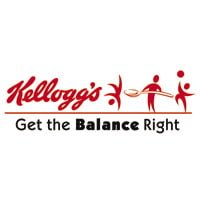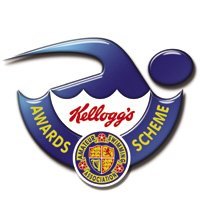
When preparing a strategy for success, a business needs to be clear about what it wants to achieve. It needs to know how it is going to turn its desires into reality in the face of intense competition. Setting clear and specific aims and objectives is vital for a business to compete. However, a business must also be aware of why it is different to others in the same market.
This case study looks at the combination of these elements and shows how Kellogg’s prepared a successful strategy by setting aims and objectives linked to its unique brand.
Branding
One of the most powerful tools that organisations use is branding. A brand is a name, design, symbol or major feature that helps to identify one or more products from a business or organisation.
The reason that branding is powerful is that the moment a consumer recognises a brand, the brand itself instantly provides a lot of information to that consumer. This helps them to make quicker and better decisions about what products or services to buy.
Product positioning

Managing a brand is part of a process called product positioning. The positioning of a product is a process where the various attributes and qualities of a brand are emphasised to consumers. When consumers see the brand, they distinguish the brand from other products and brands because of these attributes and qualities.
Focused on Kellogg’s, this case study looks at how aims and objectives have been used to create a strategy which gives Kellogg’s a unique position in the minds of its consumers.
The market

The value of the UK cereals market is around £1.1 billion per year. Kellogg’s has a 42% market share of the value of the UK’s breakfast cereal market.
The company has developed a range of products for the segments within this market, targeted at all age groups over three years old. This includes 39 brands of cereals as well as different types of cereal bars. Consumers of cereal products perceive Kellogg’s to be a high quality manufacturer.
As the market leader, Kellogg’s has a distinct premium position within the market. This means that it has the confidence of its consumers.
Developing an aim for a business

Today, making the decision to eat a healthy balanced diet is very important for many consumers. More than ever before people want a lifestyle in which the food they eat and the activities they take part in contribute equally to keeping them healthy.
Research undertaken for Kellogg’s, as well as comprehensive news coverage and growing public awareness, helped its decision-takers to understand the concerns of its consumers. In order to meet these concerns, managers realised it was essential that Kellogg’s was part of the debate about health and lifestyle. It needed to promote the message ‘Get the Balance Right’.
Decision-takers also wanted to demonstrate Corporate Responsibility (CR). This means that they wanted to develop the business responsibly and in a way that was sensitive to all of Kellogg’s consumers’ needs, particularly with regard to health issues. This is more than the law relating to food issues requires. It shows how Kellogg’s informs and supports its consumers fully about lifestyle issues.
Any action within a large organisation needs to support a business direction. This direction is shown in the form of a broad statement of intent or aim, which everybody in the organisation can follow. An aim also helps those outside the organisation to understand the beliefs and principles of that business.
Kellogg’s aim was to reinforce the importance of a balanced lifestyle so its consumers understand how a balanced diet and exercise can improve their lives.
Creating business objectives
Having set an aim, managers make plans which include the right actions. These ensure that the aim is met. For an aim to be successful, it must be supported by specific business objectives that can be measured.
Each of the objectives set for Kellogg’s was designed to contribute to a specified aim. Kellogg’s objectives were to:
- encourage and support physical activity among all sectors of the population
- use resources to sponsor activities and run physical activity focused community programmes for its consumers and the public in general
- increase the association between Kellogg’s and physical activity
- use the cereal packs to communicate the ‘balance’ message to consumers
- introduce food labelling that would enable consumers to make decisions about the right balance of food.
SMART objectives

Well-constructed objectives are SMART objectives. They must be:
- Specific
- Measurable
- Achievable or Agreed
- Realistic
- Time-related.
Each of the objectives set by Kellogg’s was clear, specific and measurable. This meant Kellogg’s would know whether each objective had been achieved. The objectives were considered to be achievable and were communicated to all staff. This made sure that all staff agreed to follow certain actions to achieve the stated aims. The objectives were set over a realistic time-period of three years.
By setting these objectives Kellogg’s set a direction that would take the business to where it wanted to be three years into the future.
Strategy

Having created an aim and set objectives, Kellogg’s put in place a process of planning to develop a strategy and a series of actions. These activities were designed to meet the stated aim and range of business objectives.
Supporting improved food labelling
In the area of food labelling, Kellogg’s introduced the Kellogg’s GDAs to its packaging, showing the recommended Guideline Daily Amounts. These GDAs allow consumers to understand what amount of the recommended daily levels of nutrients is in a serving of Kellogg’s food.
Working with a group of other major manufacturers, Kellogg’s introduced a new format in May 2006, with GDAs clearly identified on brand products and packages. These GDAs have been adopted by other manufacturers and retailers such as Tesco.
Sponsoring swimming programmes

For many years Kellogg’s has been working to encourage people to take part in more physical activity. The company started working with the Amateur Swimming Association (ASA) as far back as 1997, with whom it set some longer term objectives. More than twelve million people in the UK swim regularly.
Swimming is inclusive as it is something that whole families can do together and it is also a life-long skill. The ASA tries to ensure that ‘everyone has the opportunity to enjoy swimming as part of a healthy lifestyle’. As a lead body for swimming, the ASA has been a good organisation for Kellogg’s to work with, as its objectives match closely those of the company.
Kellogg’s became the main sponsor of swimming in Britain. This ensured that Kellogg’s sponsorship reached all swimming associations so that swimmers receive the best possible support. Kellogg’s sponsors the ASA Awards Scheme with more than 1.8 million awards presented to swimmers each year. This relationship with the ASA has helped Kellogg’s contribute in a recognisable way to how individuals achieve an active healthy balanced lifestyle. This reinforces its brand position.
Promoting exercise

Working with the ASA helped Kellogg’s set up links with a number of other bodies and partners. For example, Sustrans is the UK’s leading sustainable transport organisation. Sustrans looks at the different ways that individuals can meet their transport needs in a way that reduces environmental impact. It is the coordinator of the National Cycle Network.
This provides more than 10,000 miles of walking and cycle routes on traffic-free paths throughout the UK. To meet its business objective of encouraging and supporting physical activity Kellogg’s is developing a promotion for a free cyclometer which will be advertised on television in 2007.
Walking is one of the easiest ways for people to look after themselves and improve their health. To encourage people to walk more often, Kellogg’s has supplied a free pedometer through an offer on All-Bran so that individuals can measure their daily steps.
During 2006 more than 675,000 pedometers were claimed by consumers. From a research sample of 970 consumers, around 70% said they used the pedometer to help them walk further. Kellogg’s Corn Flakes Great Walk 2005 raised more than £1 million pounds for charity on its way from John O’Groats, through Ireland and on to Land’s End. In 2004, 630,000 people took part in the Special K 10,000 Step Challenge.
Kellogg’s in the community
Kellogg’s has also delivered a wide range of community programmes over the last 20 years. For example, the Kellogg’s Active Living Fund encourages voluntary groups to run physical activity projects for their members. The fund helps organisations like the St John’s Centre in Old Trafford which runs keep-fit classes, badminton and table tennis.
Since 1998 Kellogg’s has invested more than £500,000 to help national learning charity ContinYou to develop nationwide breakfast club initiatives. These include start-up grants for new clubs, the Breakfast Club Plus website, the Kellogg’s National Breakfast Club Awards and the Breakfast Movers essential guide.
Breakfast clubs are important in schools because they improve attendance and punctuality. They help to ensure that children are fed and ready to learn when the bell goes. Kellogg’s promotes breakfast via these clubs, not Kellogg’s breakfast cereals. Together Kellogg’s and ContinYou have set up hundreds of breakfast clubs across the UK, serving well over 500,000 breakfasts each year.
Communicating the strategy

Effective communication is vital for any strategy to be successful. Kellogg’s success is due to how well it communicated its objectives to consumers to help them consider how to ‘Get the Balance Right’. It developed different forms of communication to convey the message ‘eat to be fit’ to all its customers.
External communication
External communication takes place between an organisation and the outside world.
As a large organisation, Kellogg’s uses many different forms of communication with its customers.
For example, it uses the cartoon characters of Jack & Aimee to communicate a message that emphasises the need to ‘Get the Balance Right’. By using Jack & Aimee, Kellogg’s is able to advise parents and children about the importance of exercise. These characters can be found on the back of cereal packets.
The company has also produced a series of leaflets for its customers on topics such as eating for health and calcium for strong bones. These are available on its website.
Internal communication
Internal communication takes place within an organisation. Kellogg’s uses many different ways to communicate with its employees. For example, Kellogg’s produces a house magazine which is distributed to everybody working for Kellogg. The magazine includes articles on issues such as getting the balance of food and exercise right. It also highlights the work that Kellogg’s has undertaken within sport and the community.
To encourage its employees to do more walking, Kellogg’s supplied each of its staff with a pedometer. Such activities have helped Kellogg’s employees to understand the business objectives and why the business has created them. It also shows clearly what it has done to achieve them.
Conclusion

Research undertaken by Kellogg’s as part of the 2005 Family Health Study emphasised that a balanced diet as well as regular exercise were essential for good all round health and wellbeing.
Kellogg’s is demonstrating good corporate responsibility by promoting and communicating this message whenever it can and by investing money in the appropriate activities. This was the broad aim. To achieve this aim, Kellogg’s set out measurable objectives.
It developed a business strategy that engaged Kellogg’s in a series of activities and relationships with other organisations. The key was not just to create a message about a balanced lifestyle for its consumers. It was also to set up activities that helped them achieve this lifestyle.
This case study illustrates how consumers, given the right information, have made informed choices about food and living healthily.
